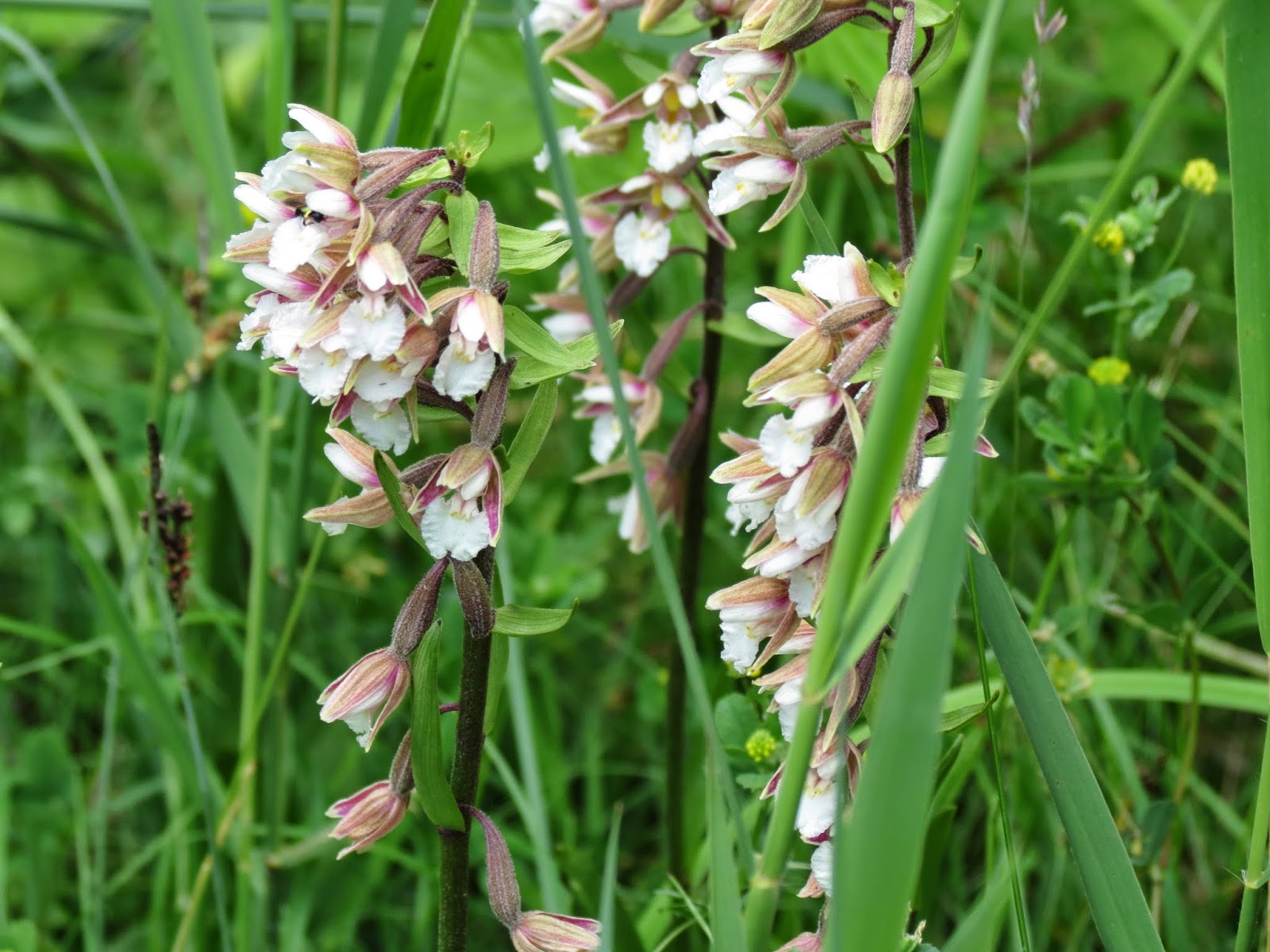Having not visited in over two weeks, today
was devoted to carrying out a monthly inventory of the Birds of Tring
Reservoirs.......
Although still warm, the day was dominated
by frequent heavy rain showers.
I began at MARSWORTH RESERVOIR, where the
woodland tract held singing Goldcrest, Blackcap, Common Chiffchaff, Chaffinch
and Wren and the reedbed, a male Reed Bunting and numerous Western Reed
Warblers. The latter in fact were busy feeding young, flying out of the reedbed
to surrounding bushes and vegetation - at least 16 birds being seen. A Comma
butterfly was my first of the year.
Along the causeway were no fewer than 26
Greylag Geese (including a pair with 5 young) and 58 Mallard, whilst the water
held 4 Coot, 4 Great Crested Grebe (including this adult with a Freshwater
Crayfish), 2 Grey Heron, 17 Black-headed Gulls and 8 Common Tern.
Most noteworthy were the 9 active House
Martin nests beneath the eaves of 'Lock 42 Cottage' (see pix below) and a
singing male WILLOW WARBLER (my first at the site since early May).
Moving on to STARTOP'S END RESERVOIR in
heavy rain, most significant were the 57 SAND MARTINS present - presumably
failed breeders already heading south or perhaps early fledglings. A male
Greenfinch and a single House Sparrow were by the banks, while 4 Mute Swans, 12
Canada Geese, 6 Mallard, 33 Tufted Duck and 28 Coot were counted. An
eclipse-plumaged Red-crested Pochard was showing well on the Grand Union Canal,
while of 5 Great Crested Grebes, one was a juvenile. A red Kite drifted over,
with 18 Common Terns and 8 Common Starlings noted.
Good numbers of Coot on TRINGFORD RESERVOIR
included this pair breeding by the entrance, while of 66 counted, nearly half
were this year's broods. There were a lot of fishing Common Terns too (12 in
number at one point), with a single Black-headed Gull and the 2 Lesser
Black-backed Gulls loitering. Great Crested Grebes had successfully bred rearing
two young.
The usual pair of Mute Swans had done well
too - yielding 6 cygnets - while a MANDARIN DUCK put on a good performance at
the dam (Pied Wagtail and Robin there too).
No less than 3 Little Egrets were with 6 or
so Grey Heron, with 4 Sinensis Cormorants roosting. At least 3
different male Common Chiffchaffs were in song, 5 male Blackcap (as well as a
family group), no fewer than 7 singing male Wrens (plus 3 separate family
groups), Blue Tits, Chaffinch and a male Song Thrush.
Plenty of breeding activity noted, with both
Common Chiffchaff and Robin feeding young, with Skylark and Common Whitethroat
noted in the horse paddocks and Red Kite, Collared Dove (scarce here) and 3
Common Swifts encountered near the flour mill. This area also yielded a family
group of Common Buzzards (adults feeding two young) as well as a large number of
grassland butterflies, including over 100 Ringlet and 20 Marbled
White.
This very bedraggled juvenile Song Thrush
was by the sewage works.
At WILSTONE RESERVOIR, Little Egret numbers
had increased to 7, with all of the Grey Herons now fledged (16+) and most of
the Sinensis Cormorants. Mute Swans numbered 27, with 90+ Greylag
Geese, 38 Canada Geese, 8 Gadwall, 31 Tufted Duck and 312 Coot, as well as 8
Great Crested Grebe. The number of nesting Common Terns on the rafts was at
least 16, while the Common Kingfishers were in the vicinity of the hide; 2
post-breeding Lapwing were with the Little Egrets in the shallows.
Around the edges, species noted included
Wren (8), Long-tailed Tit, Western Reed Warbler, Common Blackbird (10+), Red
Kite (3), Common Buzzard, Skylark, Common Whitethroat, Song Thrush and Pied
Wagtail, while cereal fields by Rushy Meadow held several nesting pairs of Reed
Bunting.






























































































